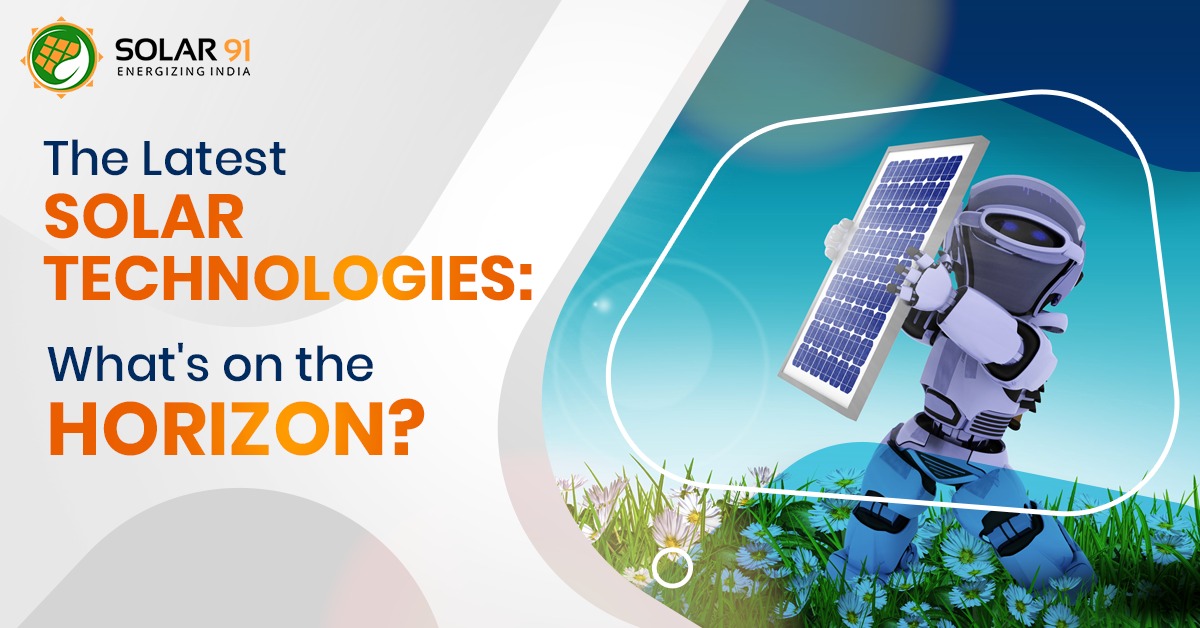The Latest Solar Technologies: What’s on the Horizon?
Solar energy has long been hailed as a sustainable and clean alternative to traditional fossil fuels. Over the years, significant advancements have been made in solar technology, resulting in increased efficiency, affordability, and accessibility. In this blog post, we will explore the latest developments in solar technologies that are revolutionizing the renewable energy landscape. From next-generation solar panels to advanced energy storage solutions, these innovations are paving the way for a brighter, greener future.
Governments and corporations are investing in solar capacity as a result of falling prices that have brought solar power into parity with fossil fuel plants in many countries and the growing pressure to reduce carbon emissions.
What are the technologies and trends that will enable this growth, then?
Latest Trends and Technologies in Solar Industry
Solar Paint
Imagine a world where every surface, from buildings to cars, can generate electricity. This vision is becoming closer to reality with the advent of solar paint technology. Researchers are developing solar paint, a liquid solution containing semiconducting nanoparticles that can be sprayed or painted onto various surfaces, effectively turning them into solar panels. Solar paint is cost-effective, scalable, and can be applied to curved or irregular surfaces, making it a versatile option for energy generation. While still in the early stages of development, solar paint holds immense potential for transforming our urban landscapes into clean energy-producing environments.
Solar Window
Conventional windows could soon become a source of clean energy with the emergence of transparent solar technologies. These solar windows incorporate thin films of specialized materials that can capture sunlight while still allowing visible light to pass through. Transparent solar panels can be integrated into windows of buildings, vehicles, and even portable devices, enabling them to generate electricity while maintaining their primary function. This innovation has the potential to revolutionize the concept of energy-efficient buildings, where windows become active contributors to the overall energy needs.
Advanced Energy Storage
One of the significant challenges with solar power has been its intermittent nature. To address this issue, advanced energy storage technologies are being developed to store surplus energy generated during the day for use during cloudy periods or at night. Lithium-ion batteries have been widely used for energy storage, but emerging technologies such as flow batteries, solid-state batteries, and hydrogen storage systems are being explored for their potential to offer higher energy density, longer lifespan, and faster charging capabilities. These advancements in energy storage will play a crucial role in ensuring a stable and reliable supply of solar power, making it a viable alternative to fossil fuels.
Floating Solar Farms
Millions of houses in Asia are being powered by large-scale floating solar farms that are being built on rivers and lakes. The largest farms now being built will have capacities beyond 2GW, which is the size of a sizable natural gas, coal, or nuclear plant. Examples of these farms include those in Indonesia and South Korea.
According to research, placing floating PV panels on just 10% of the world’s hydroelectric reservoirs could increase energy generation by 4TW, which is equal to the capacity of all fossil fuels combined.
Additional advantages of floating solar panels include higher efficiency than land-based ones due to the cooling effect of the water, decreased evaporation to preserve water for hydroelectricity, irrigation, and drinking, less shading of panels, lower interconnection costs, and a reduced need for civil works.
Introduction of Artificial Intelligence in Solar Industry
The increasing importance of AI in the solar energy industry is one of the most exciting recent discoveries. Despite all the fanfare, artificial intelligence is still largely underutilized. But things might quickly change, perhaps as early as 2023.
The efficient optimisation and integration of variable renewable energy sources into the power grid are just two applications of artificial intelligence that could speed the transition of the entire world to a cleaner energy source. These applications of AI might quicken the transformation in the solar energy industry.
Off-grid solar
Off-grid solar which supplies electricity to people and communities not connected to the grid, is expected to continue growing in 2023. By supplying electricity to remote or rural areas, off-grid solar can promote economic growth and development.
Conclusion
As the demand for clean energy continues to rise, the latest advancements in solar technologies are driving the transformation of the renewable energy landscape. Solar energy can readily produce large amounts of affordable, environmentally friendly electricity. Solar photovoltaic cells have grown progressively more adaptable thanks to new technologies and ongoing development. New solar energy innovations are showcasing how adaptable this potent energy source is. Energy and money are being saved by practical applications in anything from street lighting to architecture. They are also unmistakable proof that solar energy is the way of the future.

